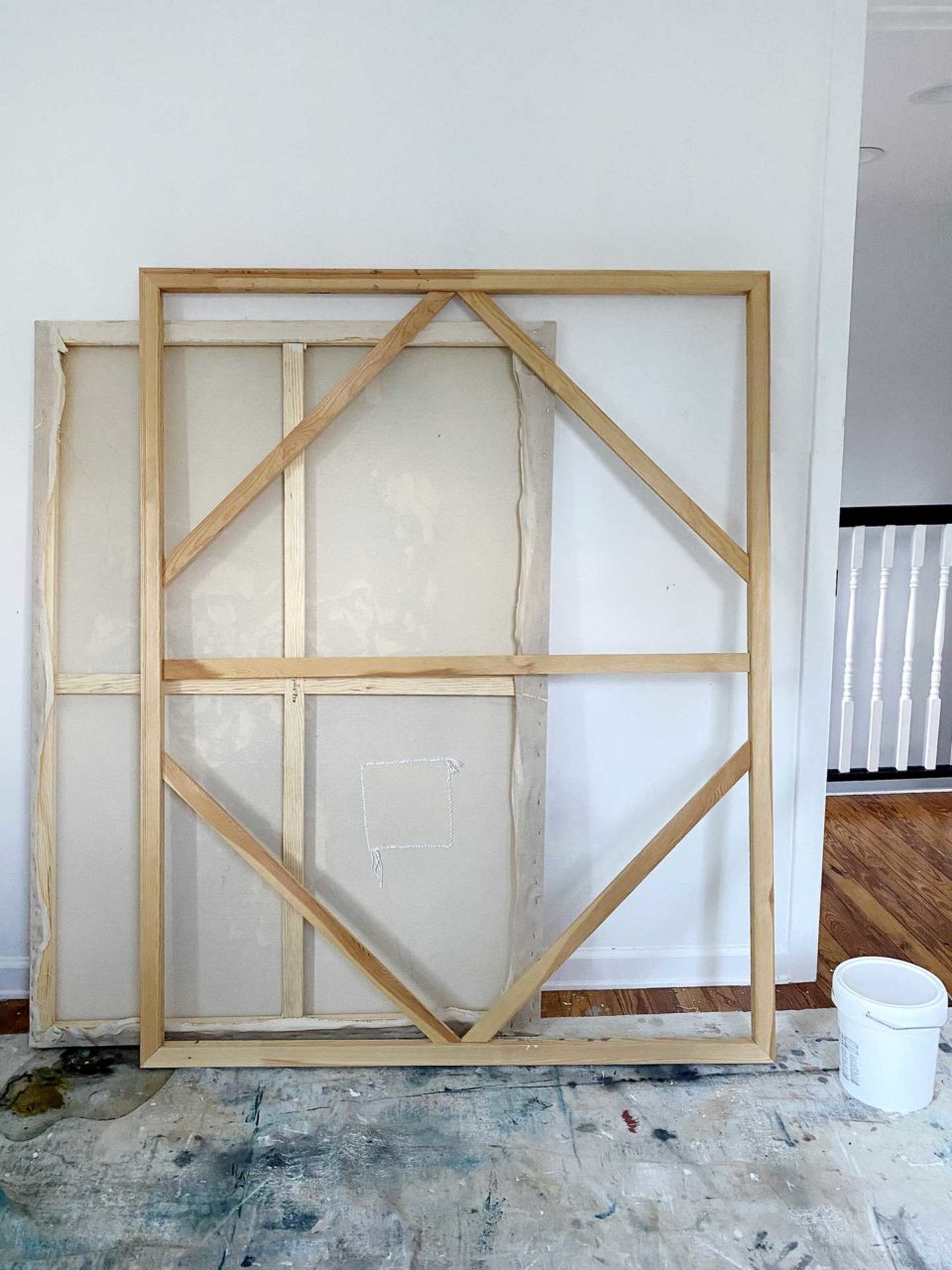Why Make Art?
An essay on my art making philosophy and its subsequent outworking in my business strategy.
Disclaimer: The following essay is my artmaking and business strategy philosophy. In no way do I think or believe that this is the only or even the best way to be an artist. This is merely the only way I know how to do it.
I was about three years into my professional art practice when I was catching up with an old friend from high school. She said to me, “I’m so surprised you decided to do this art thing, I always thought you’d do something big and important with your life. You seem happy doing this though.” The implication being, that what I do, making art, is neither big, nor important.
I understand. I don’t save people’s lives. I’m not creating groundbreaking technologies; I’m not feeding tens of thousands of people. I’m not affecting policy that changes the systems in which people live.
My intention for “big and important” impact in people’s lives is more subversive than that. To unpack what I mean I have to tell you how I landed here making art.
I was graduating from a college that I did not want to go to, with a degree that I never had any intention of practicing. I was faced with the question, “what are you going to do now?” I know a lot of us have found ourselves there. There is so much pressure, or at least I felt so much pressure my entire life to work hard, get good grades, to be something great because so much has been invested in me. I felt so much pressure but I didn’t feel like I knew how to live. What was life without being a workaholic? What was a vacation without 3 college essays to write? What was summer break without 6 open electives to fill? What was a honeymoon without working on business content strategy? When I was graduating from college, the pressure was too great to answer, “what are you going to do now?” So I didn’t answer that question, the only question I could cope with answering was, “how do you want to live your life?”
That was a question I could answer. Painting is the one of the only things that has brought me pleasure since I was a small child. My mother instilled a love for art history into me and put me in art classes and painting tutorships throughout my upbringing. Art was my first love, it sustained me through painful seasons, it was by my side at every step in my life. Painting was the immediate answer that gave my heart butterflies when I asked myself “how do you want to live your life, Christine?” I wanted to spend my days painting and my evenings surrounded by community, neighbors and family sharing meals and sweet conversation. I wanted my days to be filled with flexibility where I could order my own schedule around the needs of my community while still making the things I love.
This brings me to the kind of art I chose to make. Many art critique sessions have taught me that it’s obvious if an abstract artist is communicating effectively or not, even if he or she is not communicating with words or faces. Growing up I practiced portraiture and still life, but those works never moved me. Most portraiture I find either comical or tragic. Most still life, if not technically impressive, I find boring. In my experience, the pieces that have always moved me the most are abstract works. Standing in front Jacob’s Ladder by Helen Frankenthaler literally moved me to tears. To me, abstract works cut to the soul. They deal in elementary elements cutting to the heart of what we think and feel. When I say elementary elements I mean that most abstraction tends to deal with color, light, emotion, and many visceral human experiences. Rather than trying to capture a face or scene, abstraction portrays the internal portrait of what is going on inside of a person.
So what should be the purpose of the art? What could be “important” about creating more abstract art for the world? This is a question each artist needs to answer for him or herself. Some artists are trying to provoke you to anger or action. Some choose specific policy issues and stake their art and careers on it. Some artists enjoy the frivolity and playful joke telling that art affords. If one looks at the work of any one artist, usually after scrolling a little bit or even looking at a few blog posts, you can suss out the philosophy and motive behind the work.
If you’re unsure of the philosophy or motive behind my work, let me spell it out plainly for you. The purpose of my work is to bring beauty into the lives of my viewers. I view my works much like religious iconography. My artwork serves as meditations and reminders. We are influenced by our surroundings, the places we live, and the images we see daily change our behaviors. If you are catholic, walking past an icon of the Virgin Mary may incite a hail Mary prayer from you, effecting change in your day and your soul. Similarly, the intention and material choices of my work are meant to lead the viewer to slow down and be still. When the light catches the gold and metallic elements in my pieces I hope the viewer is reminded to seek the light. The peaceful movements of my works are made to remind the viewer to create peace with others. The oasis of a visual disruption in a viewer’s sightline is meant to cause a visual rest. It is an opportunity to take a deep breath and encourage the viewer to make something beautiful in their life or the lives of others immediately. That is the subversive intention behind my art; to disrupt visually, remind of beauty and goodness, and to spur physical change in your breath and the way you conduct yourself daily. Thus causing a habitual, physical, emotional, and spiritual change in daily life.
This motive behind my work lead me to my current business structure. My business strategy from day one was to build full time passive income from my art so that I could focus on making work that I find important, thought provoking, and meaningful. If you don’t know what passive income is, it’s work that once created, continues to bring in income with little or no further effort on my part. I make a full time living off of licensing my artwork to larger corporations (e.g. Target, West Elm, Homegoods, Hyatt Hotels etc..) as well as outsourcing my own prints and home goods items. Any sale of an original painting I consider “cherries on top.”
There are three main reasons I’ve structured my art career this way. The first is if I’m really trying to bring beauty and light into people’s lives then I need to make my work as accessible as possible to as many people as possible. This means I don’t make art only for the upper-class who can afford it, I also allow my work to be accessible to those who might be able to only afford a $20 print, a $5 sticker, or even a free phone wallpaper download. If I’m following through with the intellectual consistency of making my art with the purpose of bringing beautiful reminders to the lives of people, then I need to give people more options for participating than only originals and prints in the $$$ or $$$$ range. Of course, original paintings are deeper, more beautiful, and filled with a piece of the artists’ life, energy and time. A print will never be able to compare to an original, something is always lost, but it’s my goal to try and make at least some of the beauty accessible for all.
The second reason a completely passive art income is important to me is because it also serves my needs. It takes the pressure off of my original paintings to sell, because I know I will have money coming in, whether people purchase my originals or not.
The final purpose is that this business model keeps me intellectually curious. I want to make work that spurs conversations and spurs daily moments of change. That is what I think art (capital A, fine art) should do. I think art should make us better people. It should remind us of the amazing world we live in. It should make us take better actions. It should cause us to love our neighbors. It should encourage us to live more richly with our neighbors and draw our souls closer to God. That’s what I think art should do. I find that when some artists are dependent on the sale of their original works as their main bread and butter they become more commercially appealing, their work stays stagnant and (at least to me… personal opinion here) gets boring. Simply, if you’re afraid you won’t make rent unless you sell 10 paintings, then there is pressure to make artwork that has mass appeal and is safe.
As an aside, I think we are at a really unique time in human history where for the first time ever artists have the agency to be their own benefactors. Gone are the days where a wealthy king, church, or patron would have to pluck you up and support your lifestyle so that you could continue painting. Dying is the model where you must be represented by a gallery to sell your work. I feel lucky that I can make a full time passive income from my artwork without needing to placate authorities, or bend to the creative will of a commanding representation deal. We are in a renaissance if we choose to be.
Why make art at all? Aren’t there more important things you should be doing with your life? I contend that people have the right to love what they do for work. I do not believe the only “important” work is that which is arduous or painful. As an American, I know that we worship at the altar of busy and brute force. I think it’s much more important work to ask, what beauty can I bring into someone’s life today? How can I help fill this earth with more light and more gentleness? That’s what is important to me.



Comments
Thanks Christine,
I love your comments and they challenge me to think about my life choices and my faith. I’m grateful too for the impact you have had in the Olmstead family. Thanks for that.
Pingback: 7 Surefire Ways to Get Over Art Block - Christine Olmstead
I love your work, Christine, and your motivation and heart behind it!!
I remember you way back when, while I worked in Technical Services at PHC Library.
Kudos for pursuing your gift and sharing it with others!
God’s richest blessings to you!
Thank you so much for the note of encouragement! It’s so good to hear from you. I hope you are doing well! Thanks for dropping in and saying hi! Blessings to you too!
Christine – Your blog is honest, sincere and beautiful. It has made me think more about my own direction in art and I want to thank you for sharing your thoughts. You are awesome.